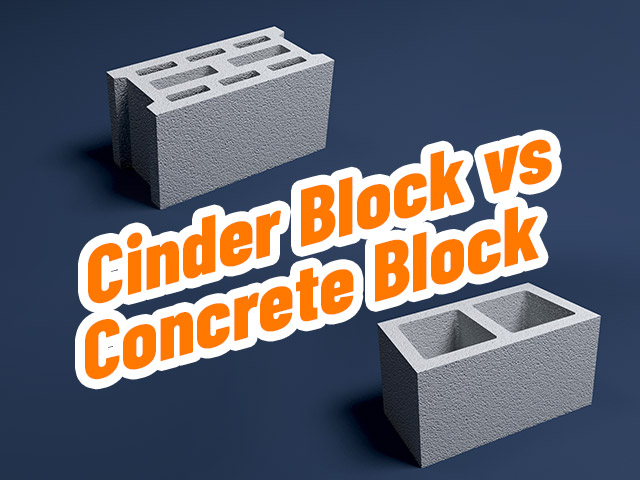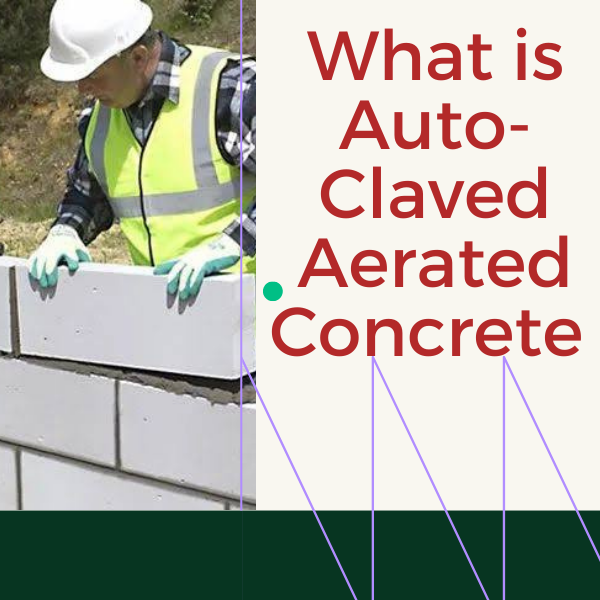Table of Contents
Concrete blocks are a type of masonry unit made by pouring concrete into blocks of steel or plastic. The use of concrete blocks is increasing day by day. Let’s discuss the three different types of blocks: concrete, cinder block and hollow brick.
An introduction to the three different blocks: concrete, cinder block and hollow brick.
When it comes to foundations, walls and other building projects, there are three main types of blocks that are used: concrete, cinder block and hollow brick. Here is a brief overview of the differences between these three types of blocks:

Concrete blocks are made from a mixture of Portland cement, aggregate (usually sand and gravel) and water. Concrete blocks are very strong and are commonly used in load-bearing walls and foundations.
Cinder blocks are made from a mixture of fly ash, limestone, gypsum and water. These blocks are not as strong as concrete blocks but are lighter in weight, which makes them easier to work with. Cinder blocks are often used in non-load-bearing walls.
Hollow bricks are made from a mixture of clay, shale, sand and water. They are not as strong as concrete or cinder blocks but they have good insulating properties. Hollow bricks are often used in exterior walls.
Take a look at some of the specifications for Concrete Block.
When it comes to construction, there are a variety of materials that can be used. Two common options are concrete block and cinder block. Both have their own advantages and disadvantages, so it’s important to know the difference before making a decision.
A concrete block is made from a mixture of cement, aggregate, and water. It is then moulded into its desired shape and left to cure. Once it cures, it is incredibly strong and durable. Concrete block is often used in the construction of foundations and exterior walls.
Cinder block is made from a mixture of coal ash, lime, and water. It is then moulded into its desired shape and left to cure. Cinder block is not as strong as concrete block, but it is lighter and easier to work with. Cinder block is often used in the construction of interior walls.
Hollow brick is made from a mixture of clay, sand, and water. It is then moulded into its desired shape and left to dry. Hollow brick is not as strong as concrete or cinder block, but it has a higher insulation value. Hollow brick is often used in the construction of exterior walls.
What are the differences between concrete block, cinder block and hollow brick?
If you’re wondering about the differences between concrete block, cinder block and hollow brick, you’re not alone. It’s a common question, especially for those who are planning to use one of these materials for a construction project.

Here’s a quick rundown of the key differences between these three popular building materials:
A concrete block is made from concrete that has been formed into a moulded block. Cinder block is made from coal cinders that have been formed into a moulded block. Hollow brick is made from clay that has been formed into a moulded block and then fired in a kiln.
Concrete blocks are the most popular type of block used in construction projects. They’re strong, durable and versatile, making them ideal for use in both load-bearing and non-load-bearing applications. Cinder blocks are less popular than concrete blocks, but they offer some advantages over their concrete counterparts. Cinder blocks are typically lighter in weight than concrete blocks, making them easier to work with. They’re also more fire-resistant than concrete blocks. Hollow bricks are the least popular type of block used in construction, but they offer some unique benefits. Hollow bricks are much lighter than either concrete or cinder blocks, making
How do you care for each type of material?
Assuming you are referring to caring for the exterior of each type of block:
Concrete blocks and cinder blocks are both made of concrete, so they can be cleaned in the same way. You can pressure wash them or use a garden hose and a stiff brush. Be sure to rinse off any cleaner or soap you use. Hollow brick is made of clay, so it needs to be treated differently. You should avoid pressure washing or using a hose, as this can damage the brick. Instead, use a soft brush and mild detergent to clean it.
How do you work with them on construction projects?
There are three main types of blocks used in construction: concrete, cinder, and hollow bricks. Each of them has its own unique properties that make them better suited for certain applications. Here’s a quick rundown of the differences between each type of block:

Concrete blocks are made from a mixture of cement, sand, and gravel. They’re typically used in the construction of walls and foundations, as they’re very strong and durable.
Cinder blocks are made from coal ash and Portland cement. They’re lighter than concrete blocks, making them easier to work with. Cinder blocks are often used in the construction of partitions and load-bearing walls.
Hollow bricks are made from clay that has been fired in a kiln. They’re much lighter than both concrete and cinder blocks, making them easy to work with. Hollow bricks are typically used as a decorative finish on walls.
I hope this article will help you to understand the differences between concrete block, cinder block and hollow Brick. You may also want to see my other post on my Blog. If I have missed anything here, please let me know about that in the comment below this post.
Share it with your friends.
Happy Learning.
If you liked this article, then please help me to share this article with your friends through Facebook, Twitter, WhatsApp or Instagram. You can also find us on Facebook, Twitter, Instagram, Telegram Channel, YouTube Channel, and Pinterest. Also, Subscribe to our mailing list to get a new post update from us. And, do me a favour, if you find this post helpful, rate a 5 star below-




